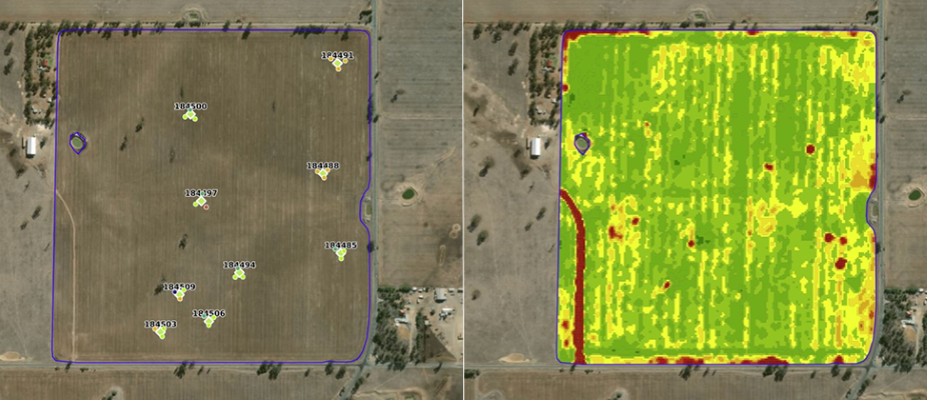

In-Paddock Variability of Plant Available Water
PhD: Peter Weir
Supervisors: Assoc Prof Peter Dahlhaus, Dr Nathan Robinson, and Assoc Prof Peter Vamplew ![]()
Thesis: In-paddock variability of plant available water ![]()
Year commenced: 2020
Year completed: 2025
Research overview
With the adoption of Precision Agriculture (PA) and implementation of site-specific crop management (SSCM) by farmers, there is a better understanding of both spatial and temporal variabilities in cropping fields and to a lesser extent, pastures. Large amounts of data have been acquired by farm businesses by sampling and analysis, and from monitors on harvesters, with the aim of improving crop and soil management. These ‘big data’ sources have the potential to improve the management and efficiency of farm enterprises.
The utilisation of disparate legacy spatio-temporal datasets to determine in-paddock variability of soil attributes associated with crop production and pasture management is to be investigated, focussing on assembling, interrogating, and cross analysing the data that has already been collected by farmers.
Development of a conceptual model, using existing spatio-temporal data as the basis for predictions of within-paddock variability in plant-available water (PAW), which will consider publicly available data sets including satellite imagery, landscape metrics, soil moisture measurements, digital soil data, and meteorological data.
Soil moisture is one of the most common requirements in decision support systems used by farmers, agronomists, and agricultural services. These outputs will contribute to the decision support systems running “under-the-hood”, contributing to the “dashboard” display being developed as part of other research projects currently underway.
